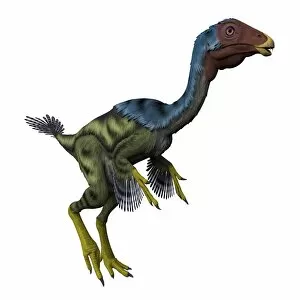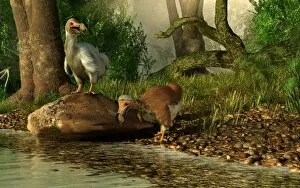Flightless Birds Collection (page 3)
Flightless birds are a fascinating group of creatures that have adapted to their environments in unique ways
All Professionally Made to Order for Quick Shipping
Flightless birds are a fascinating group of creatures that have adapted to their environments in unique ways. Take the Brown Kiwi, for example, as illustrated by Buller in 1873. This flightless bird is native to New Zealand and has become an iconic symbol of the country's wildlife. Another famous flightless bird is the Dodo, depicted here crossing a natural bridge over a stream in a group. Although extinct now, these birds once inhabited the island of Mauritius and were known for their distinctive appearance. The Emu, a tall brown bird found in Australia (as shown in an illustration from Strickland's work in 1848), is another member of this remarkable avian family. With its long legs and powerful build, they can run at impressive speeds despite being unable to fly. Penguins are perhaps the most well-known flightless birds due to their adorable appearance and unique breeding behaviors. Researchers study penguin breeding colonies like those found on Sea Lion Island in the Falkland Islands or Rockhopper Penguins showing affection towards each other. Moving on to more exotic species, we have the Southern Cassowary - an imposing wild adult male portrait captured beautifully. Found primarily in Australia and Papua New Guinea rainforests (as seen with females photographed both within rainforest settings and on beaches), these large birds play crucial roles as seed dispersers. Lastly, we come across an Emu walking confidently through saltbush habitat at Mungo National Park. These resilient creatures have managed to adapt to various landscapes despite lacking wings for flight. Flightless birds demonstrate nature's incredible ability to evolve diverse solutions for survival without taking wing into the skies above us. From kiwis and dodos to emus and penguins - they all exemplify how different species can thrive even when grounded on land instead of soaring through the air.
















































